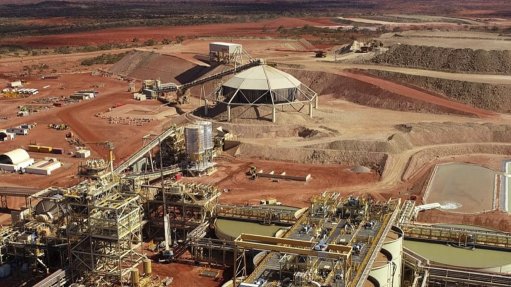Avoid that sinking feeling on underground development projects by using target cost contracts
Shaft sinking and underground development projects for new and existing mines are high risk endeavours given the lack of predictability in underground geological, hydrogeological and geotechnical groundmass charac-teristics. These risks are compounded by factors such as the location of the mine and the fact that there are a limited number of contractors capable of successfully executing these projects. These unique factors mean that the typical contracting strategies employed for most construction projects (i.e., lump sum or re-measurable contracts) are unsuitable for these projects.
Despite FIDIC releasing its Conditions of Contract for Underground Works in 2019 (the Emerald Book), there has been limited uptake of this contract in mining projects as, in the authors’ view, most employers are uncomfortable taking on all of the risk associated with the nature of underground works.
MDA Attorneys has been involved in the drafting and negotiation of many shaft sinking and underground development contracts and has been instrumental in advancing the use of target cost contracts to effectively manage the unique risks presented by these projects.
The reality with shaft sinking and under-ground development projects is that if certain risks materialise, the costs associated with dealing with these risks could be extensive, resulting in major losses to a contractor under the typical contracting strategies. If the employer wants to avoid a situation where the contractor either overprices the contract or loses significant sums of money (and the additional risks such scenario presents), then the adopted contracting strategy has to reflect an equitable balance of these unique risks.
Target cost contracts allow for the parties to agree a target cost to execute the project, together with mark-up for profit. The parties also agree which risks, if they materialise, will adjust the target cost. As the work is executed the contractor is paid its cost – and as risks materialise, the target cost is adjusted. Ultimately, at the end of the project, the cost paid to the contractor is reconciled against the adjusted target cost and any cost savings or over-runs are shared between the parties.
Provided it is structured correctly, this contracting strategy allows for the contractor to accurately price for the work knowing that should certain risks materialise, these will be dealt with on an equitable basis, and it is unlikely that company-threatening losses will be incurred. In return, the employer is provided with insight into how the contractor has structured its costs and can participate in evaluating the proposed methods of working to interrogate possible cost savings. A key feature of this contracting strategy is that it provides flexibility to the parties as to how they approach and deal with each specific risk. The employer can also assume certain risks which are fully within its control (for example access to the workface for the sinking of a sub-vertical shaft in an existing mine). The purpose of this contracting strategy is to align the objectives of both parties in reducing the cost and time of executing the project.
Examples of this contracting strategy’s ability to address the unique risks in underground projects include:
- Where the parties agree to a specific risk constituting an employer’s risk that adjusts the target cost – although such risk is classified as belonging to the employer, there remains an element of such risk which is “shared” – firstly the project cost impact of the risk is used to adjust the target cost, not rates included in the contract. As such the employer is paying cost plus mark-up for such risk. Secondly, if the risk is not dealt with efficiently by the contractor, this will result in additional costs being incurred which, in isolation, would result in a cost overrun to be shared between the parties.
- Risks allocated to the contractor (such as rectification of defective works), although allocated to the contractor, may still, in effect, be shared by the employer. It may be agreed that the contractor will be paid the cost of such rectification work, however, the target cost will not be adjusted for these costs. This may result in cost overruns which remain to be shared between the parties.
- The setting of the share ratio for the cost savings or overruns between employer and contractor takes into consideration not only the project objectives, but also project constraints, risks, uncertainties and the strengths and weaknesses of the parties. Ultimately, the share ratio that is suitable to each party’s risk appetite and the ability of the contractor to control the cost may be selected.
In conclusion, shaft sinking and under-ground development projects are high risk projects that require a contracting strategy that motivates the parties to work together to reduce costs and time. In our experience, a properly priced and negotiated target cost contract, with suitable share ratios achieves this goal.
Comments
Press Office
Announcements
What's On
Subscribe to improve your user experience...
Option 1 (equivalent of R125 a month):
Receive a weekly copy of Creamer Media's Engineering News & Mining Weekly magazine
(print copy for those in South Africa and e-magazine for those outside of South Africa)
Receive daily email newsletters
Access to full search results
Access archive of magazine back copies
Access to Projects in Progress
Access to ONE Research Report of your choice in PDF format
Option 2 (equivalent of R375 a month):
All benefits from Option 1
PLUS
Access to Creamer Media's Research Channel Africa for ALL Research Reports, in PDF format, on various industrial and mining sectors
including Electricity; Water; Energy Transition; Hydrogen; Roads, Rail and Ports; Coal; Gold; Platinum; Battery Metals; etc.
Already a subscriber?
Forgotten your password?
Receive weekly copy of Creamer Media's Engineering News & Mining Weekly magazine (print copy for those in South Africa and e-magazine for those outside of South Africa)
➕
Recieve daily email newsletters
➕
Access to full search results
➕
Access archive of magazine back copies
➕
Access to Projects in Progress
➕
Access to ONE Research Report of your choice in PDF format
RESEARCH CHANNEL AFRICA
R4500 (equivalent of R375 a month)
SUBSCRIBEAll benefits from Option 1
➕
Access to Creamer Media's Research Channel Africa for ALL Research Reports on various industrial and mining sectors, in PDF format, including on:
Electricity
➕
Water
➕
Energy Transition
➕
Hydrogen
➕
Roads, Rail and Ports
➕
Coal
➕
Gold
➕
Platinum
➕
Battery Metals
➕
etc.
Receive all benefits from Option 1 or Option 2 delivered to numerous people at your company
➕
Multiple User names and Passwords for simultaneous log-ins
➕
Intranet integration access to all in your organisation























